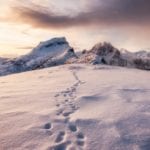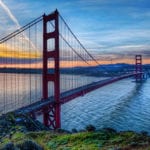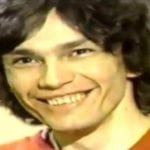 Humans
Humans  Humans
Humans  Movies and TV
Movies and TV 10 Holiday Movies Released at Odd Times of the Year
 Politics
Politics 10 Countries Where Religion and Politics Are Inseparable
 Weird Stuff
Weird Stuff 10 Freaky Times When Famous Body Parts Were Stolen
 Miscellaneous
Miscellaneous 10 Interesting Things Manufacturers Stopped Making and Why
 Gaming
Gaming 10 Funny Tutorials in Games
 History
History 10 Fascinating Little-Known Events in Mexican History
 Facts
Facts 10 Things You May Not Know about the Statue of Liberty
 Movies and TV
Movies and TV 10 Movie Adaptions That Brought Popular Songs to Life
 Health
Health 10 Miraculous Advances Toward Curing Incurable Diseases
 Humans
Humans 10 One-of-a-kind People the World Said Goodbye to in July 2024
 Movies and TV
Movies and TV 10 Holiday Movies Released at Odd Times of the Year
 Politics
Politics 10 Countries Where Religion and Politics Are Inseparable
Who's Behind Listverse?

Jamie Frater
Head Editor
Jamie founded Listverse due to an insatiable desire to share fascinating, obscure, and bizarre facts. He has been a guest speaker on numerous national radio and television stations and is a five time published author.
More About Us Weird Stuff
Weird Stuff 10 Freaky Times When Famous Body Parts Were Stolen
 Miscellaneous
Miscellaneous 10 Interesting Things Manufacturers Stopped Making and Why
 Gaming
Gaming 10 Funny Tutorials in Games
 History
History 10 Fascinating Little-Known Events in Mexican History
 Facts
Facts 10 Things You May Not Know about the Statue of Liberty
 Movies and TV
Movies and TV 10 Movie Adaptions That Brought Popular Songs to Life
 Health
Health 10 Miraculous Advances Toward Curing Incurable Diseases
Top 10 Chilling Expeditions To Antarctica
Long a symbol of the remote and the mysterious, Antarctica caps the southern extremity of our planet as one of the world’s largest land formations. Pull up an image of Antarctica on Google Earth, and you’ll see a largely featureless white mass. But beneath a seemingly impenetrable sheet of ice lie endless hidden mysteries to entice the inquisitive mind.
For instance, there’s still no explanation for the widely publicized Wilkes Land Anomaly, an enormous impact crater with a gravitational force at the center so great that it creates a “bubble” powerful enough to be detected all the way out in space.[1] Scientists say that this anomaly is what remains of an asteroid which hit the Earth millions of years ago, but not everyone is convinced that an ordinary asteroid would produce such a strong gravitational field. Furthermore, multiple oddly regular formations and seemingly altered images dot the Antarctic landscape when viewed from above, including an allegedly airbrushed section that’s estimated to be over 23 kilometers (14 mi) long.
Perhaps these mysteries are what have attracted numerous dignitaries and military expeditions to the seventh continent over the last century. While the facts may be scarce regarding the secrets Antarctica might be hiding, theories about the icy landmass, its origins, and its hidden contents continue to run wild. Here are ten bizarre examples of enduringly mysterious high-profile expeditions to the enigmatic land of Antarctica.
10 Neuschwabenland
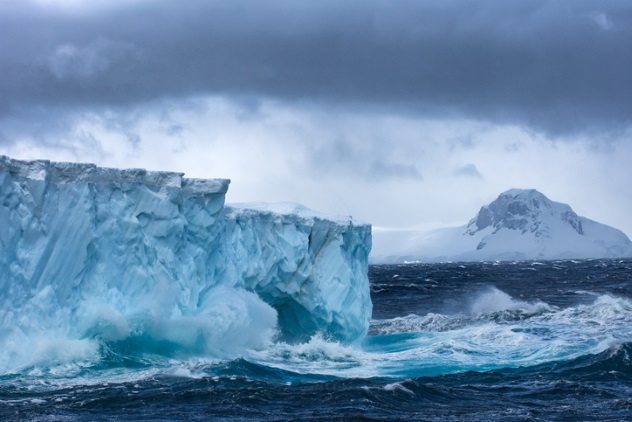
In 1939, the Third Reich dispatched an expedition to Antarctica.[2] Yes, it’s true: the Nazis did indeed attempt to establish a base on the frozen continent. But why? In reality, no one knows for sure. It’s not clear what scientific or economic benefit could have been gained by Hitler in establishing operations in a locale so frigid, devoid of life, and hard to mine for resources. Yet lack of evidence hasn’t stopped the world from wondering if there’s more to this story than meets the eye.
After the Nazi surrender in 1945, two German U-boats arrived in Argentina with full crews. While we will perhaps never know what their mission was before the fall of Hitler, many have wondered what purpose German submarines could have had in that part of the Southern Hemisphere besides visiting Antarctica. Then again, the potential of a swastika-bedecked Antarctic base isn’t the only Nazi mystery at play in the southern half of the glob. There’s also the document recently released in the declassified JFK files that seems to imply that Hitler survived the war and was hiding in Colombia.
9 Operation Tabarin

The Germans weren’t the only World War II combatants to take an interest in the icy continent. In 1943, at the height of the war, the British government launched a fully manned expedition to Antarctica named Operation Tabarin.[3] Why exactly keeping an eye on whaling fleets and denying safe anchorage to enemy vessels in this region was considered so important as to justify dispatching a state-of-the-art military vessel with a full complement of sailors to a region just about as far away from the Pacific and European theaters as possible remains a mystery.
We can only speculate that the importance of a bolstered British presence in Antarctica may have been justified by rumors of a Nazi base on the frozen continent. All that we know for certain is that the expedition survived two winters and was deemed incredibly successful, to the extent that survivors of the mission look back glowingly on this ambitious effort to learn more about our world.
8 Operation Highjump
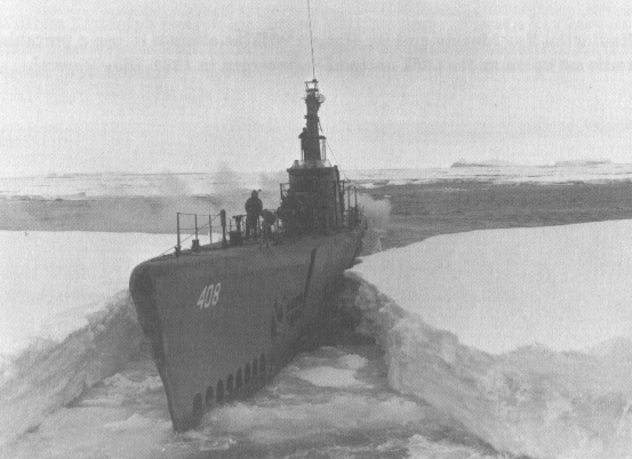
In 1946, with the psychological horrors of World War II still fresh in the minds of the American people, an expedition of no less than 13 battleships and 33 aircraft was dispatched to Antarctica by the US Navy. Called Operation Highjump, this military expedition was overseen by none other than Admiral Richard E. Byrd, already famous for his solo flights over the icy continent.[4]
The official mission parameters of training for icy conditions and establishing a steadier American foothold in Antarctica aren’t hard to believe, given the upcoming conflict with the Soviet Union, which was expected to include a land battle across the brutal Siberian wastes. Nevertheless, in the pursuing years, there has been no end to speculation that the real objective of Operation Highjump was the eradication of the fabled Antarctic Nazi base. Reports are conflicted as to the actual accomplishments of Operation Highjump, but it is known that at least three Navy airmen never made it back home alive.
7 Prince Harry
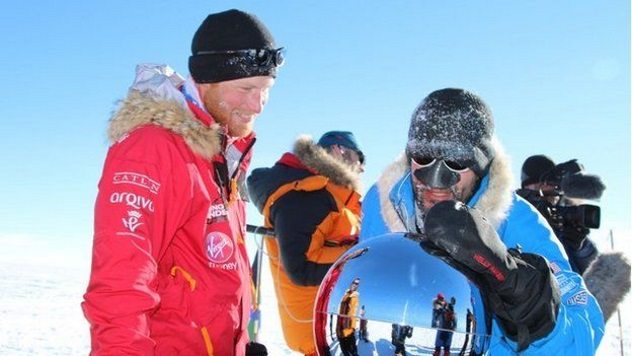
With the vital context for historical Antarctic oddities in place, let’s fast-forward to present times. In 2013, Prince Harry, fifth in line for the throne of the House of Windsor, led an expedition to the South Pole.[5] The purpose of this adventure into the icy wastes was officially to honor the 12 injured servicemen and women who accompanied Harry on what was originally slated to be a competitive march across a section of the continent.
But upon arrival, the team decided that the terrain along the 320-kilometer (200 mi) path to the center of Antarctica was too rough for competition, and the American, British, and Australian veterans ambled along in “high spirits” instead. If Harry was presuming to propose to Meghan Markle deep in the frozen wasteland of the extreme south, we can only be glad that he reconsidered and popped the question over roast chicken instead.
Besides abandoning the competitive aspect of the trip, there’s nothing overtly odd about this expedition. Yet it sets a precedent for the continued presence of high-profile dignitaries in Antarctica over the last few years that, taken in context, begins to boggle the mind.
6 Patriarch Kirill
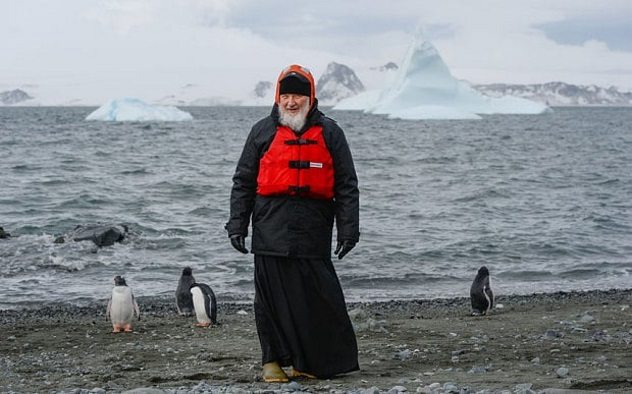
In February 2016, the heads of the Eastern Orthodox and Roman Catholic churches met for the first time since the Great Schism, the event which split the church into east and west nearly 1,000 years ago. The historic meeting in Cuba between Patriarch Kirill and Pope Francis was hailed by many as the beginning of a new age for Christianity, though no one could quite put their finger on why, out of the last 1,000 years, the two most powerful men in Christendom had decided to meet right then.
Speculation went wild, though, when only a few days after this historic meeting, it was announced that Patriarch Kirill would be joining the crew of the Russian naval vessel Admiral Vladimirsky on their voyage to the South Pole.[6] This announcement came close on the heels of reports that the Vladimirsky had made an unprecedented stop at the Saudi Arabian port of Jeddah on its way to Antarctica. At the time, Russia and Saudi Arabia were bitter economic rivals, making it hard to reckon what sort of “business” the crew or passengers of the Vladimirsky could have needed to conduct in the closest port to Mecca on their way to the South Pole.
The only reason given for Patriarch Kirill’s visit to Antarctica is that he wanted to pray at the tiny Orthodox church that had been erected on the icy continent decades ago. But did he really travel all that way to bless an empty frozen wasteland and congregate with penguins, or is there more to the bizarre story of the voyage of the Vladimirsky ?
5 Tom Hanks

Russia’s religious leader isn’t the only high-profile person to have taken an interest in the minuscule Trinity Orthodox Church in recent years.[7] During his brief Antarctic visit in February 2016, American actor Tom Hanks apparently decided that he would be remiss not to visit the seat of God in Antarctica and meet with the handful of the faithful who maintain the church.
Since Hanks converted to the Greek form of Orthodox Christianity before marrying Rita Wilson, his wife of nearly 30 years, it isn’t that surprising that he’d want to ring the bells of Trinity if he had the chance. Rather, it’s the timing of the visit that stands out like a sore thumb: Hanks and Kirill worshiped at the same miniature Antarctic chapel so closely on each other’s heels that their visits could have conceivably overlapped.
4 New Zealand’s Minister Of Defense
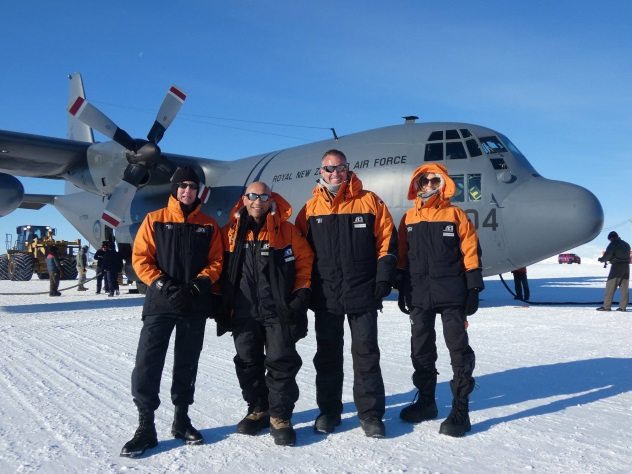
While New Zealand isn’t the closest country to Antarctica (that distinction goes jointly to Chile and Argentina), the Kiwi government does play a major role in the goings-on in the land of ice and snow. In fact, the New Zealand Defense Force is a constant presence in Antarctica, where they protect the personnel at Scott Base and McMurdo Station from the threat of killer penguins and from themselves. In February 2017, Minister of Defense Ron Mark paid what appears at the outset to have been a routine visit to the brave New Zealanders patrolling the icy wastes for baddies.
The snow-blinding Antarctic terrain is certainly bright enough to pop open the peepers of even the deepest sleeper. But for a man who must have seen quite a lot throughout his career in order to be elevated to the vaunted position of minister of defense, what could Ron Mark have witnessed on his Antarctic expedition that qualified his description of the visit as an “eye opening experience?”[8]
3 John Kerry
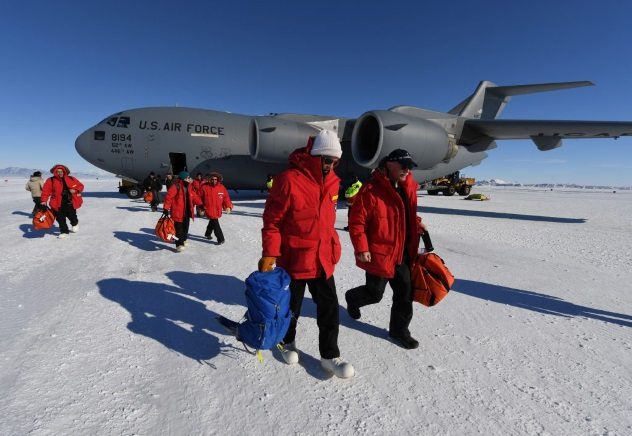
We all remember where we were on November 8, 2016. Whether we spent that day in tears of jubilation or tears of torment, Election Day 2016 was a historic day for the future of United States that, at least at the kickoff, no American wanted to miss. But there’s one US citizen who thought that there was something much more interesting going on in the world that day than the greatest electoral upset in US history. He was, at the time, America’s highest-ranking diplomat and became the highest-ranking US official to ever visit Antarctica. This unlikely late-inning deserter was none other than one-time presidential failure and former secretary of state John Kerry.[9]
Instead of cheering on his favorite candidate or offering words of wisdom to his commander-in-chief, John Kerry spent election day in Antarctica. But why? Was Kerry simply going out on an extremely expensive taxpayer-funded lark before his White House ticket ran out? If so, he had until inauguration day on January 20 to fit in some last-minute sightseeing. Michael Rubin of the conservative think tank AEI points out that, besides being wasteful, Kerry’s trip to the South Pole also appears to have been pointless, as there are no other diplomats in Antarctica for America’s top negotiator to negotiate with. Or are there?
2 Buzz Aldrin

It seems that one of the first men to set foot on the Moon wasn’t satisfied with off-world tourism and wanted to tick Antarctica off his bucket list as well. Buzz Aldrin, who has gone public in the last few years as a certified space nut, embarked in late November 2016 on what would end up being an ill-fated voyage to the South Pole.
Though the 86-year-old Aldrin was apparently cleared for the trip ahead of time by his doctors, he began to experience the symptoms of altitude sickness at some point along the journey and was rapidly evacuated to Christchurch, New Zealand, by the National Science Foundation.[10] It was while he was still hospitalized in Christchurch that he was graced with a surprise visit from NASA deputy administrator Dava Newman.
According to a tweet that Aldrin composed from his hospital bed, Newman had just completed her own tour of the icy continent and simply wanted to stop by to give Buzz her regards. But this whole story is riddled with questions from start to finish: If the elderly Aldrin was prone to altitude sickness, why did his doctors clear him to explore the 3,000-meter-high (10,000 ft) Antarctic Plateau? Why had NASA’s second-in-command visited the South Pole a day before Aldrin and only weeks after John Kerry? And why did she visit Buzz while he was still unwell in order to conduct a bedside meeting with all the optics of a military debriefing?
1 Piri Reis
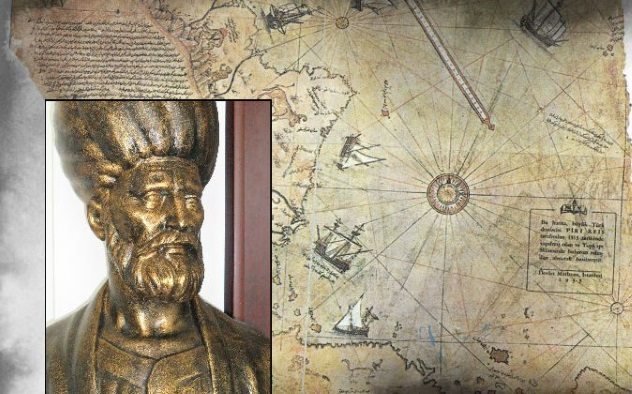
Perhaps the reason behind all of these bizarre high-profile visits to Antarctica lies hidden centuries in the past. With the use of satellite imagery, the art of mapmaking, called cartography, has advanced beyond all possibility of error. But up until the early 1900s, inaccuracies in cartography were common. Yet there’s one map from over 500 years ago that appears to capture a section of the Antarctic coastline in vivid detail.[11] There’s just one catch: There’s no ice.
Drawn in 1513 by Turkish admiral Piri Reis, this unique map was discovered in 1929, before modern cartographic assessments of Antarctica had been made. Though Admiral Reis was certainly a great explorer, he admitted to basing his maps on older sources. And though the scientific establishment may have good reason for brutally ripping into the theory that the Piri Reis map depicts Antarctica, it can’t be denied that parts of this map march in lockstep with sections of the Antarctic coastline that are buried deep under the ice and have only been verified recently with the advent of seismic instruments and satellites.
If Piri Reis truly did base his map on sources old enough to depict Antarctica without ice, what must change about our view of human history? If the Piri Reis map accurately depicts Antarctica as once having been graced with palm trees, white-haired monsters, six-horned oxen, giant snakes, and ancient ruins, wouldn’t that be enough reason for Antarctica to take center stage in the process of discovering the truth of human origin? Wouldn’t that be enough reason for top representatives of the world’s elite to make the journey to the southernmost continent? Upon arriving in Antarctica armed with a worldview entirely different from our own, what else might they have discovered?
Read more icy facts about Antarctica on 10 Fascinating Wonders Of Antarctica and 8 Greatest Antarctic Explorers.
